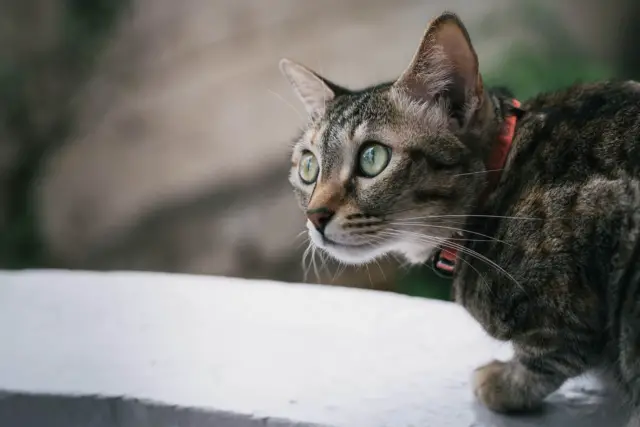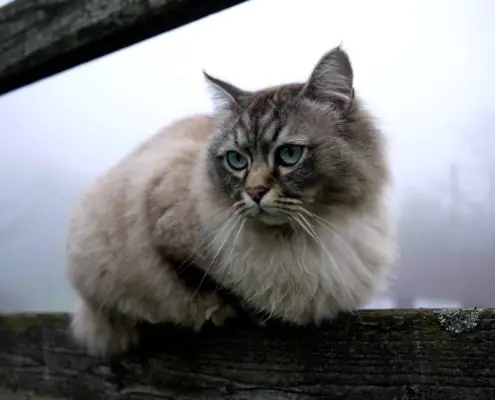
Cats are fascinating creatures with a multitude of behaviors that captivate and amaze us. One such behavior that often leaves us puzzled is their tendency to pounce. Whether it’s on a toy, a piece of string, or even our own unsuspecting feet, cats have an innate instinct to pounce. But why do they do it? In this article, we will delve into the intriguing world of feline behavior and explore the reasons behind this captivating behavior.
Understanding the predatory instinct in cats
To truly comprehend why cats pounce, we must first understand their predatory nature. Cats are natural-born hunters, and their ancestors relied on hunting skills for survival. Even though our domesticated feline friends may not need to hunt for their meals anymore, their instincts are deeply rooted in their DNA. Pouncing is an essential part of a cat’s hunting technique. It allows them to stalk and capture their prey effectively. By pouncing, cats can surprise their target and swiftly immobilize it, ensuring a successful catch.
The evolutionary purpose of pouncing
The act of pouncing has been honed over thousands of years through evolution. In the wild, cats had to rely on their pouncing skills to catch elusive prey. Those who excelled at pouncing were more likely to survive and pass on their genes to the next generation. As a result, the instinct to pounce has become deeply ingrained in cats’ genetic makeup. Even though our domesticated cats may not need to hunt for their survival, the instinct to pounce remains a fundamental part of their behavior.
The role of play in a cat’s pouncing behavior
Play is an integral part of a cat’s life, and pouncing is one of the many ways they engage in playful behavior. Kittens, in particular, use play to develop their hunting skills and coordination. By engaging in mock hunts, they learn how to stalk, pounce, and capture their prey. Even adult cats continue to play as a means of exercise and mental stimulation. Pouncing during playtime allows cats to fulfill their natural instincts in a safe and controlled environment.
Factors that trigger a cat’s pouncing behavior
Various factors can trigger a cat’s pouncing behavior. One of the most common triggers is movement. Cats have a keen eye for spotting even the slightest movement, and it immediately triggers their predatory instincts. This is why a cat may pounce on a moving toy or even a moving shadow. Other triggers include sounds, such as the rustling of leaves or the scurrying of a small animal. These triggers activate the cat’s hunting instincts, compelling them to pounce.
Different types of pouncing behaviors in cats
Cats exhibit different types of pouncing behaviors depending on the situation. The most common type is the “stalking and pouncing” behavior, where the cat stealthily approaches its target before launching a sudden attack. Another type is the “leaping and pouncing” behavior, where the cat jumps high into the air before descending upon its prey. Some cats may also engage in “ambush pouncing,” where they hide and wait for an opportune moment to surprise their target. These various pouncing behaviors showcase the versatility and adaptability of a cat’s hunting instincts.
How to encourage and engage in interactive play with your cat
Interactive play is not only a great way to bond with your cat but also a means to channel their pouncing behavior in a positive way. To encourage interactive play, provide your cat with a variety of toys that mimic prey. Toys that move or make sounds are especially enticing for cats. Engage in play sessions with your cat by using fishing rod toys or laser pointers to simulate prey movement. Make sure to allow your cat to “catch” the toy during playtime to satisfy their hunting instincts. Regular interactive play sessions will help keep your cat mentally stimulated and physically active.
Common misconceptions about cat pouncing
There are several misconceptions surrounding cat pouncing that need to be addressed. One common misconception is that cats pounce out of aggression. While it’s true that some cats may exhibit aggressive behavior, most pouncing is driven by their natural hunting instincts. Another misconception is that cats pounce as a form of dominance. However, pouncing is not a dominance display but rather a means to engage in play or capture prey. It’s important to understand the underlying motivations behind a cat’s pouncing behavior to ensure a harmonious relationship with our feline friends.
Training tips to redirect unwanted pouncing behavior
While pouncing is a natural behavior for cats, there may be instances where their pouncing behavior becomes undesirable. For example, if your cat pounces on you or other household members during play, it can be painful or disruptive. To redirect unwanted pouncing behavior, it’s essential to provide appropriate alternatives for your cat to express their natural instincts. Use toys specifically designed for interactive play and engage in regular play sessions. Additionally, provide scratching posts and climbing structures to allow your cat to fulfill their natural need to climb and scratch. Consistency and positive reinforcement are key to successfully redirecting unwanted pouncing behavior.
Conclusion
The behavior of pouncing in cats is a fascinating aspect of their nature. Rooted in their predatory instincts, pouncing serves as a means for cats to engage in play, exercise, and mental stimulation. By understanding the evolutionary purpose behind this behavior, we can provide our feline friends with the appropriate outlets to express their natural instincts. Through interactive play and proper training, we can foster a harmonious relationship with our cats while appreciating the captivating behavior that makes them unique. So the next time your cat pounces, remember that it’s not just a random act, but a glimpse into their wild ancestry. Embrace the mystery and enjoy the playful nature of our feline friends.
If you enjoyed my article, I would appreciate you sharing it with your network.

Sima Ndlebe
Sima writes for CatBuzz. He is interested in Cats, Health and Fitness, and Entrepreneurship.
Published: 6 December 2023



